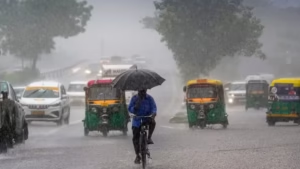According to data from the India Meteorological Department, the cold wave is still holding sway over Delhi-NCR, with a minimum temperature of 7.3 degrees on Thursday morning.
The national capital is predicted to reach a maximum temperature of about 15 degrees today, and the IMD said that there will probably be less fog over the next two days.
However, according to IMD, Delhi and the National Capital Region can expect to experience the cold wave for the next two to three days.
According to IMD data, there was moderate fog in the Jammu division, heavy fog over Madhya Pradesh and Tripura, and fog over Uttar Pradesh, Chandigarh, Rajasthan, and Bihar.
Several areas of Delhi’s air quality on Thursday were still classified as “very poor,” according to data from the Central Pollution Control Board (CPCB).
The CPCB data indicates that on Thursday morning, the Air Quality Index was 379 in RK Puram, 312 in Lodhi Road, 377 in the ITO area, and 387 in the IGI Airport area.
According to the IMD, temperatures in certain areas of Punjab, Haryana, Uttar Pradesh, and Rajasthan are expected to remain cold to extremely cold for the next two days before dropping off.
Additionally, the IMD predicted that over some areas of the plains in Northwest and East India, dense to very dense fog is likely to persist for the next two days before progressively decreasing.
The IMD predicted that many areas of Central and East India would likely see a rise in minimum temperatures of two to three degrees over the next three days, with no further significant changes.
The public was also issued a health advisory by the IMD, cautioning against lung-related health impacts as a result of cold waves and dense fog.
“Dense fog contains particulate matter and other pollutants and in case exposed it gets lodged in the lungs, clogging them and decreasing their functional capacity which increases episodes of wheezing, coughing and shortness of breath,” according to the IMD.
The IMD issued a warning about air pollution’s tendency to irritate the eye’s membranes, which can lead to various infections and cause swelling or redness in the affected eye.







